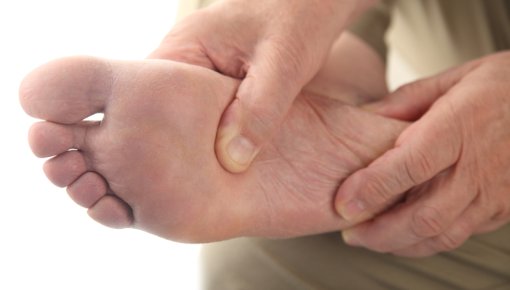Buggy A, Moore Z. The impact of the multidisciplinary team in the management of individuals with diabetic foot ulcers: a systematic review. J Wound Care 2017; 26(6): 324-339.
Bundesärztekammer (BÄK), Kassenärztliche Bundesvereinigung (KBV), Arbeitsgemeinschaft der Wissenschaftlichen Medizinischen Fachgesellschaften (AWMF). Nationale Versorgungsleitlinie: Therapie des Typ-2-Diabetes. S3-Leitlinie. AWMF-Registernr.: nvl-001g. 2023.
Dorresteijn JA, Kriegsman DM, Assendelft WJ et al. Patient education for preventing diabetic foot ulceration. Cochrane Database Syst Rev 2014; (12): CD001488.
Elraiyah T, Prutsky G, Domecq JP et al. A systematic review and meta-analysis of off-loading methods for diabetic foot ulcers. J Vasc Surg 2016; 63(2 Suppl): 59S-68S.
Fernando ME, Seneviratne RM, Tan YM et al. Intensive versus conventional glycaemic control for treating diabetic foot ulcers. Cochrane Database Syst Rev 2016; (1): CD010764.
Forsythe RO, Apelqvist J, Boyko EJ et al. Effectiveness of revascularisation of the ulcerated foot in patients with diabetes and peripheral artery disease: A systematic review. Diabetes Metab Res Rev 2020; 36 Suppl 1: e3279.
Hoogeveen RC, Dorresteijn JA, Kriegsman DM et al. Complex interventions for preventing diabetic foot ulceration. Cochrane Database Syst Rev 2015; (8): CD007610.
Morbach S, Lobmann R, Eckhard M et al. Diabetic Foot Syndrome. Exp Clin Endocrinol Diabetes 2021; 129(S01): S82-S90.
The International Working Group on the Diabetic Foot. IWGDF Guidelines on the prevention and management of diabetic foot disease. 2019.
IQWiG health information is written with the aim of helping people understand the advantages and disadvantages of the main treatment options and health care services.
Because IQWiG is a German institute, some of the information provided here is specific to the German health care system. The suitability of any of the described options in an individual case can be determined by talking to a doctor. informedhealth.org can provide support for talks with doctors and other medical professionals, but cannot replace them. We do not offer individual consultations.
Our information is based on the results of good-quality studies. It is written by a team of health care professionals, scientists and editors, and reviewed by external experts. You can find a detailed description of how our health information is produced and updated in our methods.

